A new mixed-income community in Ann Arbor, Michigan is an orchestra between solar, nature and net-zero sustainability.
Veridian at County Farm was a longtime in the making since it was first proposed in 2016. Washentaw County approved the project among six competing proposals for the former youth prison site. At the time, Ann Arbor was on the cusp of an affordable housing crisis, which many of the proposals hoped to solve. What set Veridian apart, however, was the proposal’s coupling of mixed-income housing with sustainability.
U.S. households that earn more than $200,000 per year are four times more likely to adopt solar than households earning less than $50,000 per year, according to a 2024 study published in Energy Research & Social Science.
The homes are equipped with
- rooftop solar,
- Sonnen battery storage systems,
- Bosch geothermal heat pumps,
- heat-pump water heaters,
- electric vehicle chargers, and
- all-electric appliances.
The community areas also include public electric vehicle chargers, and E-bikes and cargo bikes to make it easier for residents to run errands and transport larger items without the need for a car.
Thrive and Sonnen have been working with utility DTE since 2019 to reach a pilot agreement to allow the homes’ batteries to act as a virtual power plant (VPP), but have not yet been able to do so.
“We’re doing something that hasn’t been done before in Michigan at this scale,” Matt Grocoff, the founder of developer Thrive Collaborative told pv magazine USA. “The glacially slow nature of investor-owned utilities, regulatory framework, interconnection processes and compensation mechanisms aren’t designed for this kind of neighborhood-wide orchestration.”
“So there are challenges, but also incredible opportunities,” he said. “Our role is to show that when you align utility operations, customer value, and community resilience, everyone wins. It’s more like conducting an orchestra than flipping a switch. But now,” he added, “the utility companies need to start the music.”
Initially, Grocoff aimed to develop a microgrid for the community, but “we intentionally chose not to wall ourselves off with a traditional microgrid.”
Grocoff said their goal is to build a replicable model for how whole neighborhoods can work in partnership with utilities. “A microgrid can be the right solution in some contexts, but we saw more long-term impact in proving out the VPP model,” he said.
Grocoff hoped the community to be a model community certified in the Living Community Challenge, a pilot program he said was considered among the world’s most rigorous green building standard. The standard requires achievements across multiple areas, including using solar energy as their sole energy source, restoring a healthy interpersonal relationship with nature, endorsing products that are safe for all species through time and so forth. However, the Living Community Challenge was discontinued before Veridian was able to achieve certification.
The homes span from about $300,000 to just below $1 million, but Avalon Housing developed an all-electric affordable housing development with 110 residents across 50 units embedded within the neighborhood. Many of the residents moving into the units are directly exiting homelessness, according to Avalon Housing.
Neither Avalon’s affordable housing development nor Veridian’s community center are powered by solar yet. However, Grocoff said they are working with Avalon Housing to help them meet their target of the Living Building Challenge Affordable Housing Pilot Project for net-zero energy.
“Until recently, affordable housing non-profits could not benefit from renewable energy tax credits,” Grocoff said. “Now that we finally have direct pay for non-profits to benefit from the tax credits, the current administration has stripped away this program that was a boon for low-income housing and other non-profits.”
As for the community center, Grocoff said they hope to get the community center’s solar installation in time before the tax credits disappear at the end of the year.
The bylaws prohibit gas furnaces and combustion appliances.
The total capacity of the rooftop solar installations at Veridian is 1.5 MW. Though it would have maximized power to line the houses up so that the roofs all faced south, but doing so created an imbalance with Thrive Collaborative’s natural vision for the community, which they designed to mimic natural ecosystems, supporting bees, birds and other beneficial wildlife.

Image: Thrive Collective
“It is very much like conducting an orchestra,” Grocoff said. “In a project like Veridian, the solar and battery systems aren’t just add-ons; they’re instruments in a much larger symphony of architecture, landscape, mobility and community. The goal is not only to maximize kilowatt-hours, but to make sure the systems serve the broader vision of a truly net-zero neighborhood.”
“Someone who attended one of my lectures asked why we didn’t just face every roof 180 degrees south, like they did in the 1970s. I pointed to a tree and said, ‘Why does that tree have leaves on all sides?’ Nature doesn’t maximize for efficiency — it optimizes for outcome,” Grocoff said.
To do this, Grocoff said they used both north-south and east-west arrays. “With today’s low solar costs, that choice lets us generate more total energy than if we’d only used the south roofs,” he said.
The result?
According to Grocoff, many of the residents have had negative energy bills this summer, “which is extraordinary considering that nationwide people are experiencing record high energy bills, record high temperatures and record high air conditioning use this year.” Another resident’s energy bill was $1.30 this summer, despite charging an electric vehicle at home and being one of the hottest recorded summers, Grocoff said.
Every detail was chosen for sustainability. For example, according to Grocoff, the hardwood floors are sourced from forests that remain intact. This included their construction and installation machinery, to an extent. To transport the solar panels, the workers used First Green’s Electric Skind Steer, a 100% electric, lithium-battery powered skid steer, which they charged with the development’s onsite solar.
Veridian has plans for a grocery store supported by local farmers and producers, which Grocoff said he hopes to make the first locally owned net-zero energy grocery store in the country. The grocery store would include battery storage “to ensure resilient food access during grid outages,” he said. If Veridian is ultimately able to deploy the VPP, Grocoff said he would have the grocery store’s energy system become part of Veridian’s VPP.
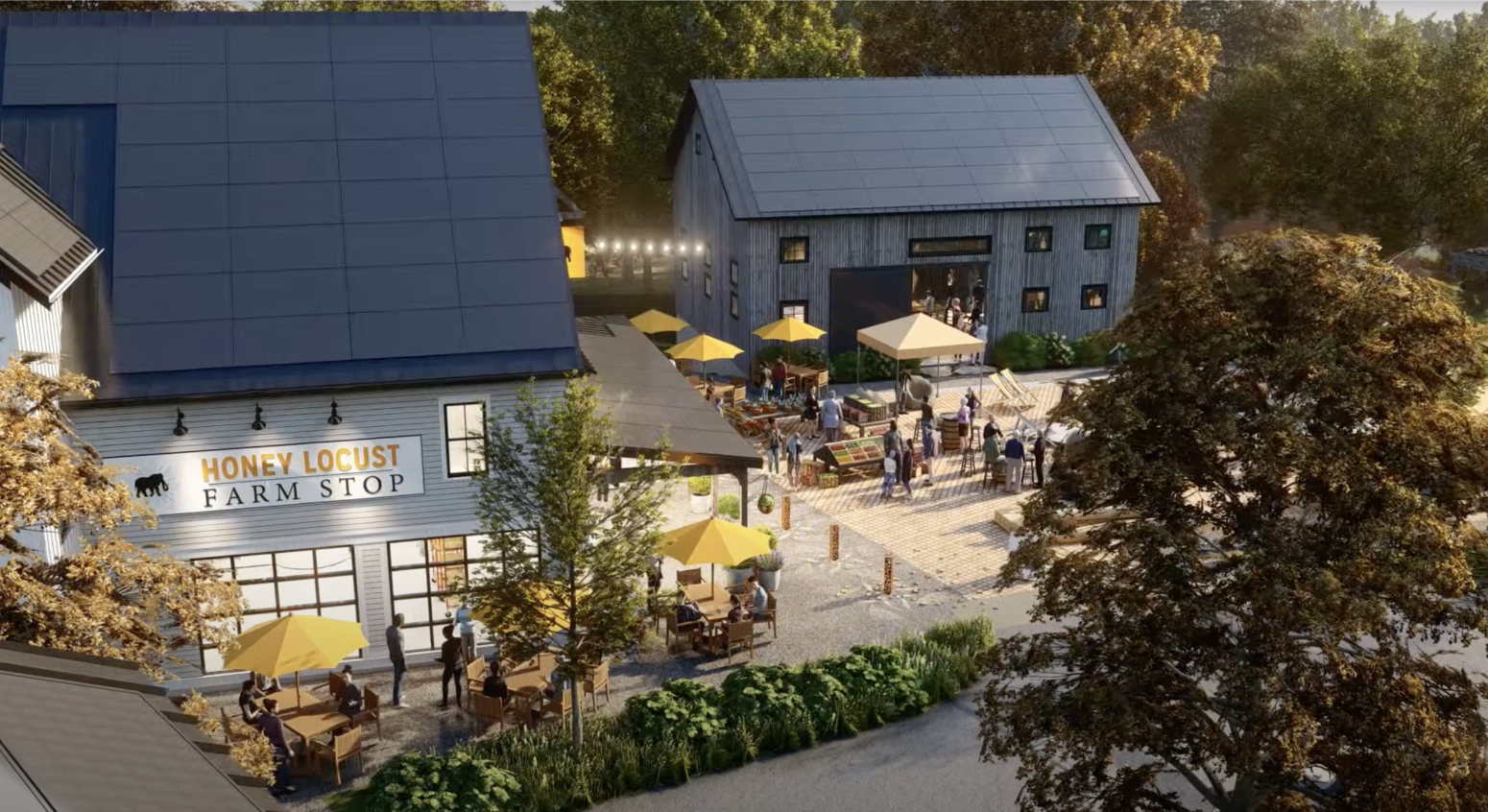
Image: Thrive Collective
This content is protected by copyright and may not be reused. If you want to cooperate with us and would like to reuse some of our content, please contact: editors@pv-magazine.com.
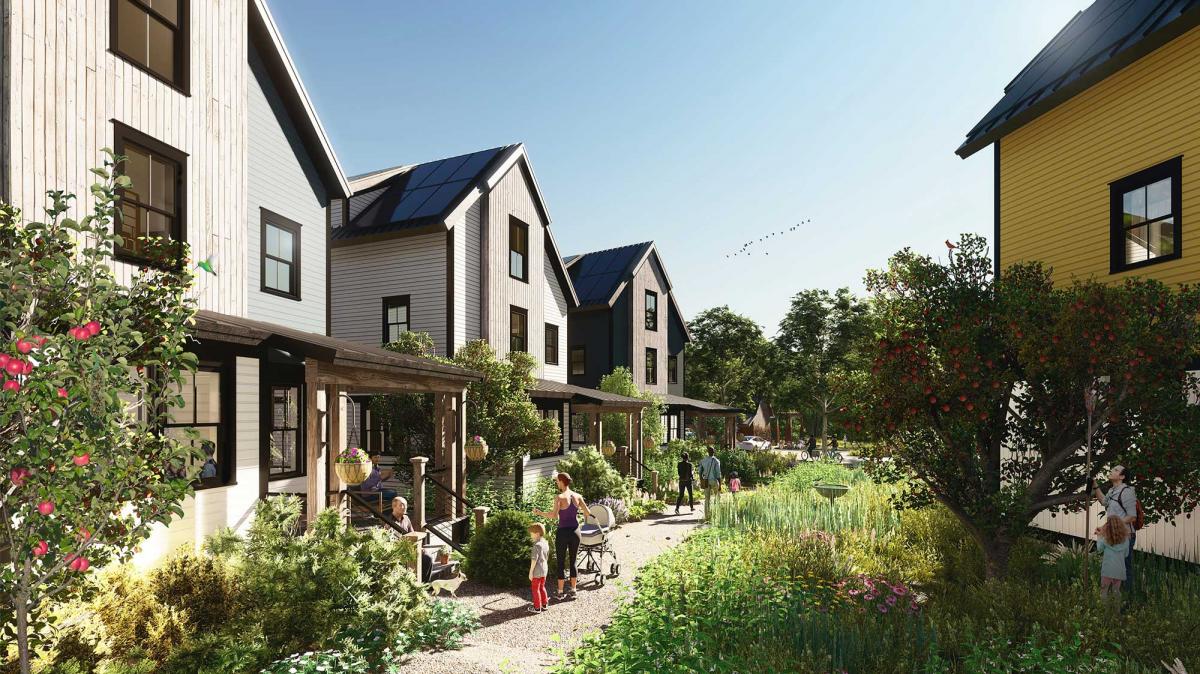

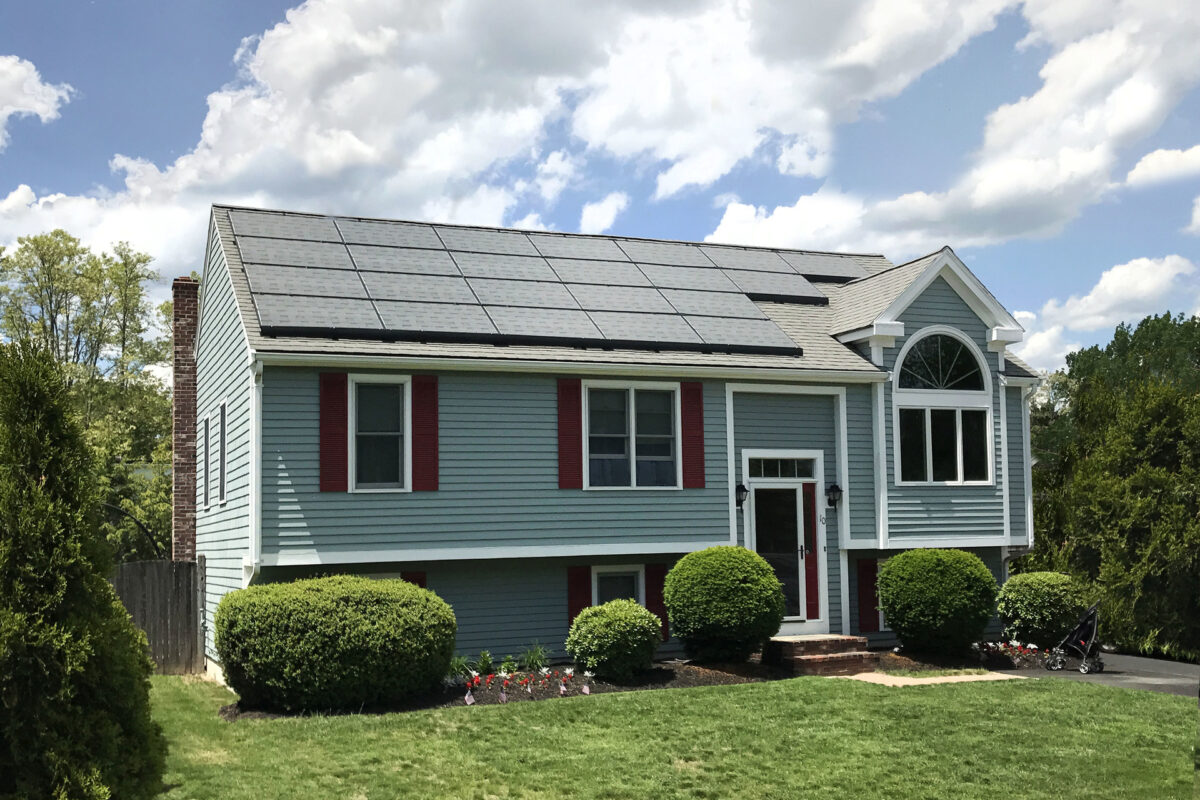


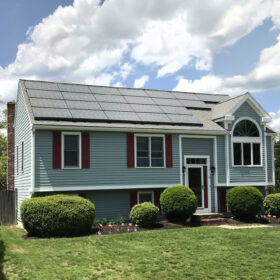
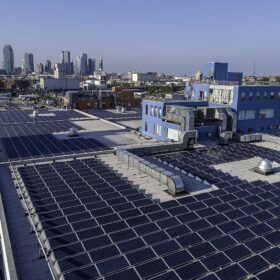
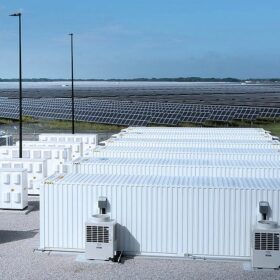
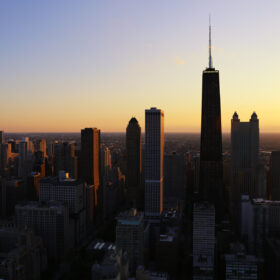
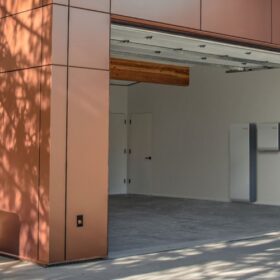
By submitting this form you agree to pv magazine using your data for the purposes of publishing your comment.
Your personal data will only be disclosed or otherwise transmitted to third parties for the purposes of spam filtering or if this is necessary for technical maintenance of the website. Any other transfer to third parties will not take place unless this is justified on the basis of applicable data protection regulations or if pv magazine is legally obliged to do so.
You may revoke this consent at any time with effect for the future, in which case your personal data will be deleted immediately. Otherwise, your data will be deleted if pv magazine has processed your request or the purpose of data storage is fulfilled.
Further information on data privacy can be found in our Data Protection Policy.